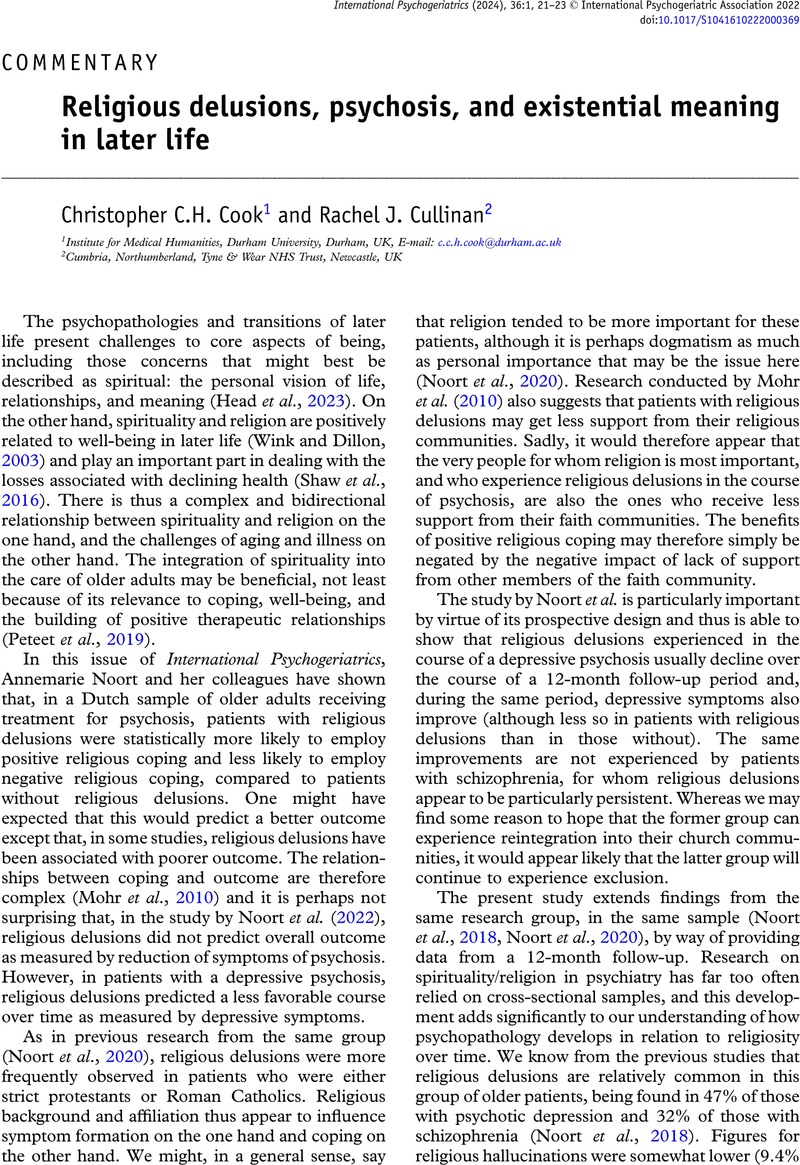Crossref Citations
This article has been cited by the following publications. This list is generated based on data provided by Crossref.
Cullinan, Rachel J.
Woods, Angela
Barber, Joanna M.P.
and
Cook, Christopher C. H.
2024.
Spiritually significant hallucinations: a patient-centred approach to tackle epistemic injustice.
BJPsych Bulletin,
Vol. 48,
Issue. 2,
p.
133.



